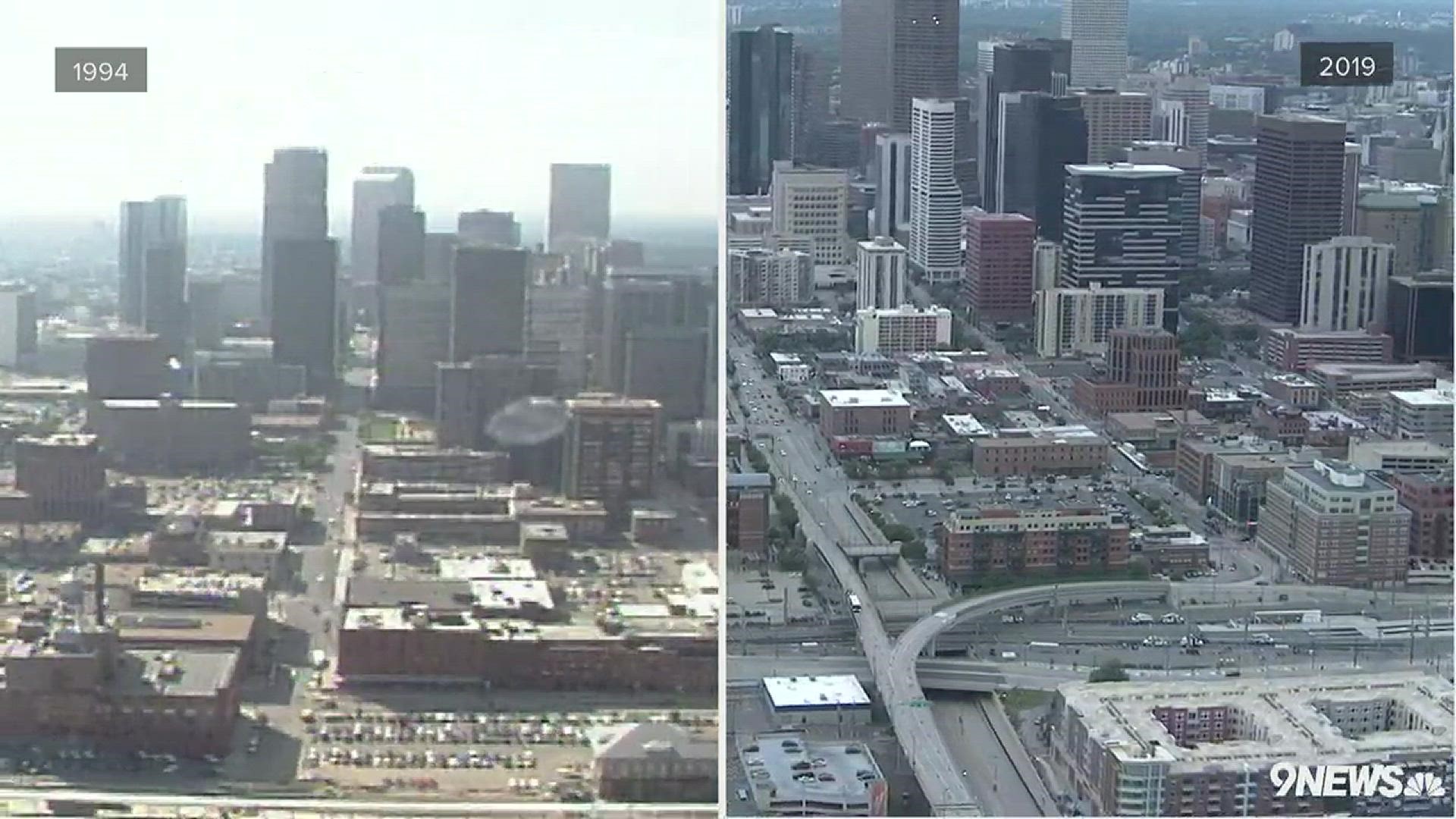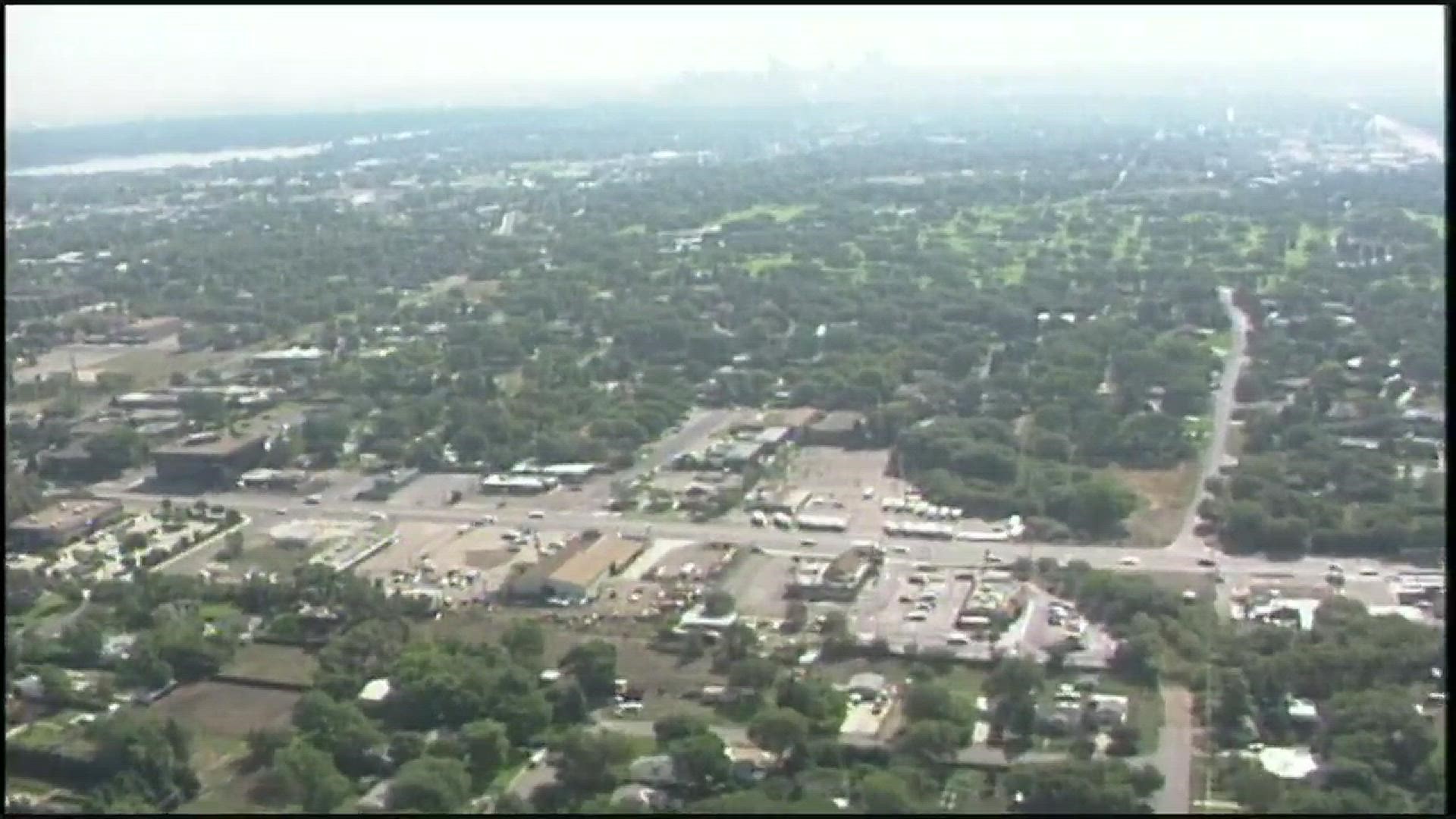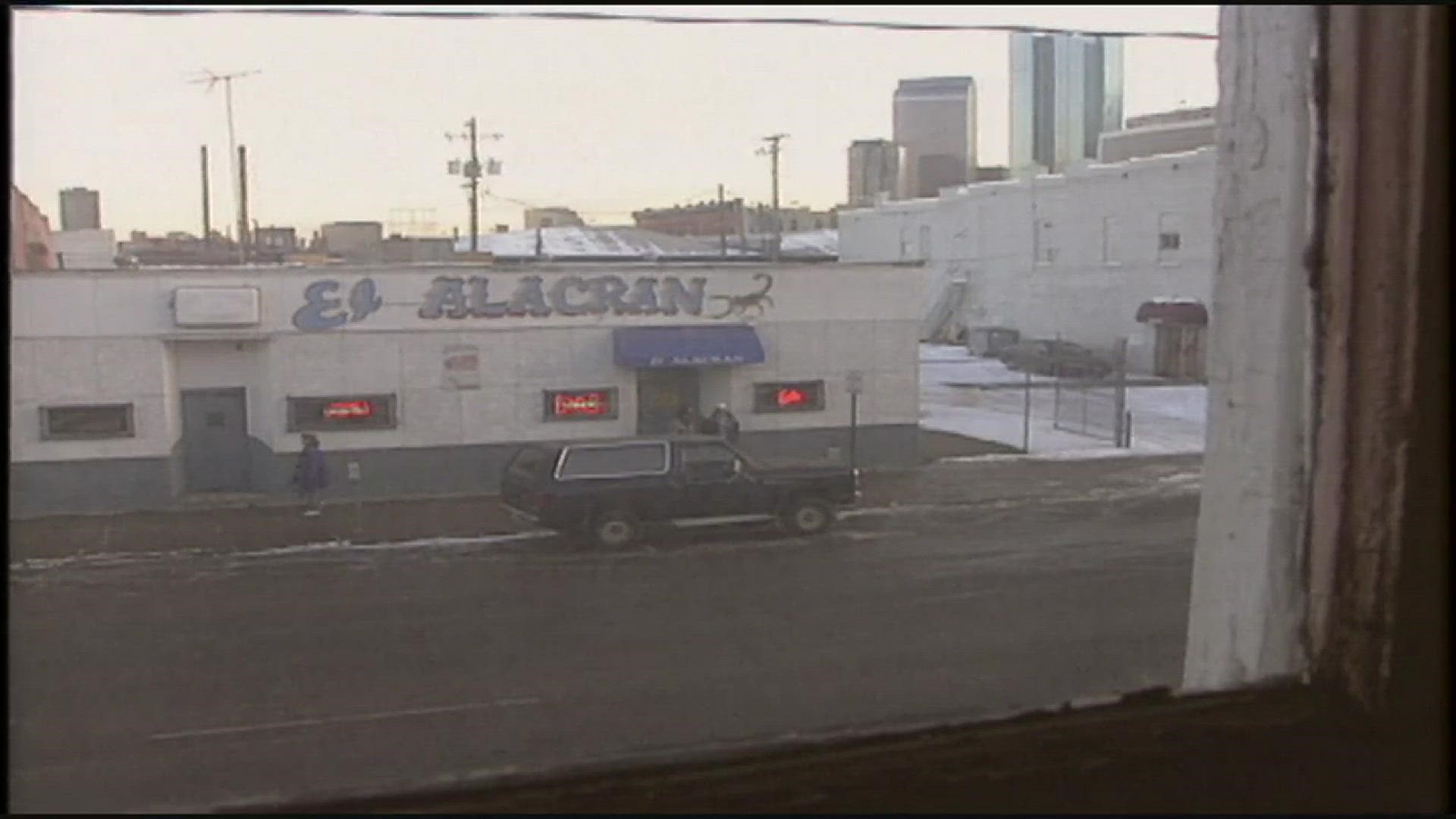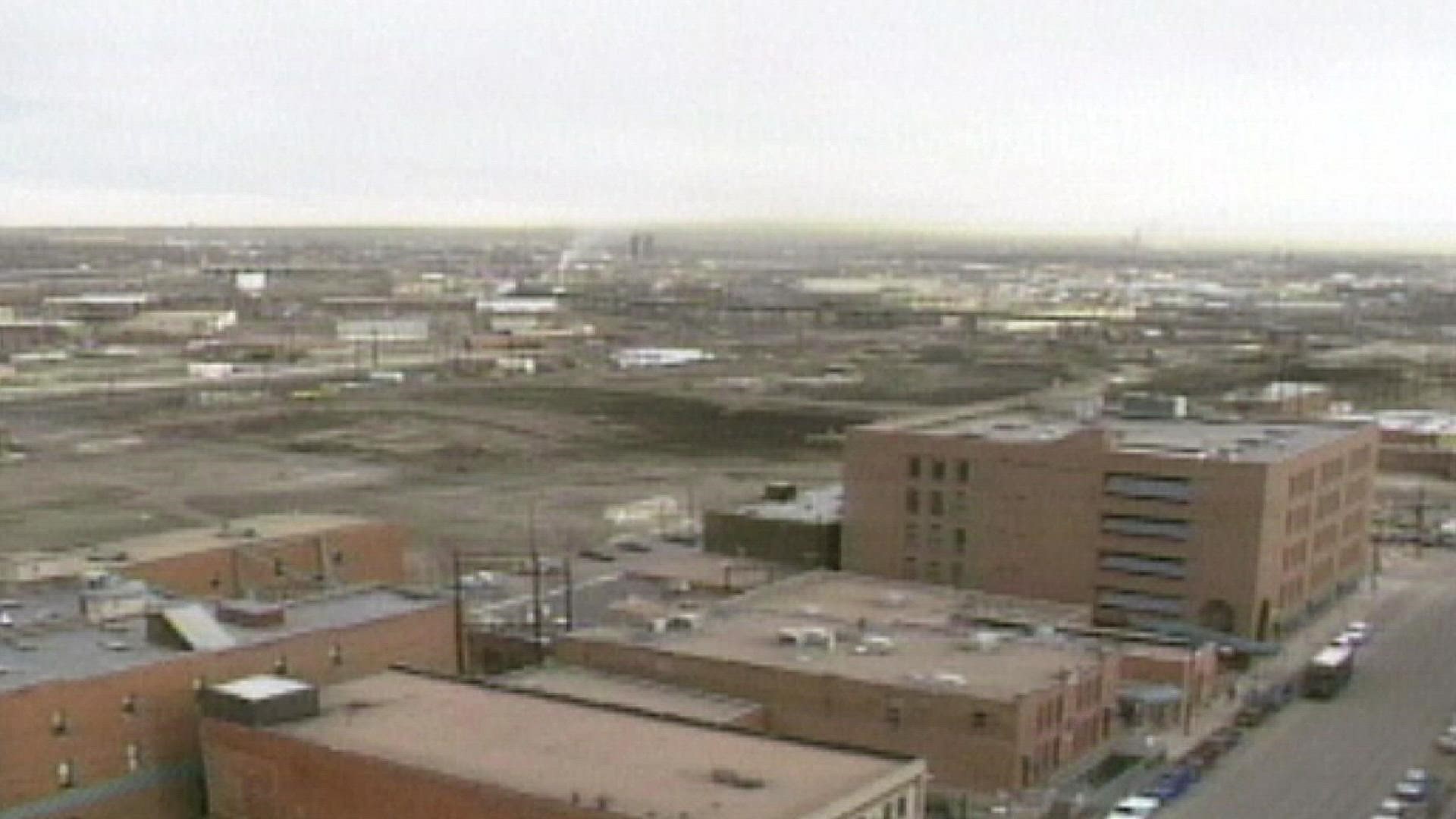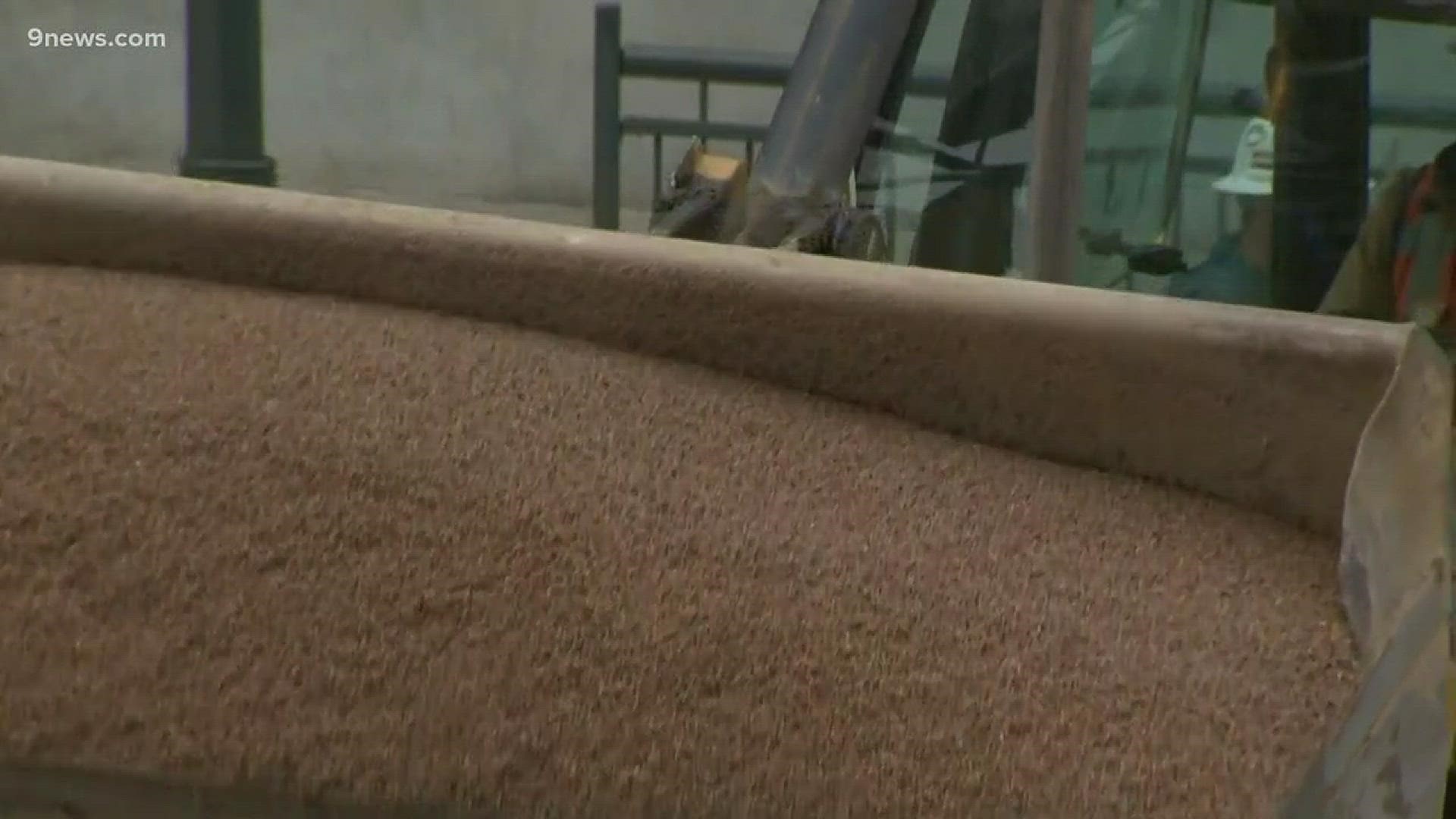DENVER — Sky9 video from 1994 tells the story of the Ballpark neighborhood better than words can.
Back then, the Denver skyline was much smaller. But it’s the land around Coors Field and just north of downtown that tells the story of how the Rockies helped revitalize an industrial area that was referred to not that long ago as Denver’s “skid row.”
Seriously: back in the early 1990s, the area had such a bad reputation that then-9NEWS Reporter Mark Koebrich did multiple pieces on efforts to quell the rampant drug trade on Larimer Street between 20th Street and Park Avenue West. While crime certainly remains a factor in the area -- Denver Police Department statistics show the area around the stadium had some of the highest crime density in the city -- the proliferation of the drug trade has declined, those same stats show.
Here’s one thing to get out of the way right now: Ballpark isn’t technically designated as an official neighborhood by the city of Denver. Neither are adjacent areas like Lower Downtown (the kids call it LoDo) or River North (better known as RiNo). Nevertheless, Ballpark has its own improvement district – and also a historic designation, which means that the warehouses which once signified urban decay will now reflect the revitalization that’s come to the area.
Check out this photo archive for a look at what the land around Coors Field used to look like: https://bit.ly/2TZi0KJ.
One thing that has stayed the same? Coors Field has sold out every Colorado Rockies home opener since 1995, bringing thousands of people to the Ballpark district of Lower Downtown Denver. This has been a boon for the now-thriving area, which sees substantial foot traffic even when baseball season is long over.
RELATED: Colorado Rockies 2019 schedule
"Ballpark is sort of the bridge between LoDo and RiNo," said Randy Thelan, the vice president for economic development for the Downtown Denver Partnership. "I think instead of just having one piece, the physical stadium, it's sort of a lynch pin now."
Unless you’ve been living under a rock, you know that this year’s Rockies home opener is on Friday. Before the game starts, join us for an Instagram tour showcasing the history of Coors Field and the Ballpark district starting at noon. This story is part of our #9Neighborhoods series. Have a recommendation for what we should check out next? Email us at webteam@9news.com!
LoDo came before Coors Field (but baseball helped it become what it is today)

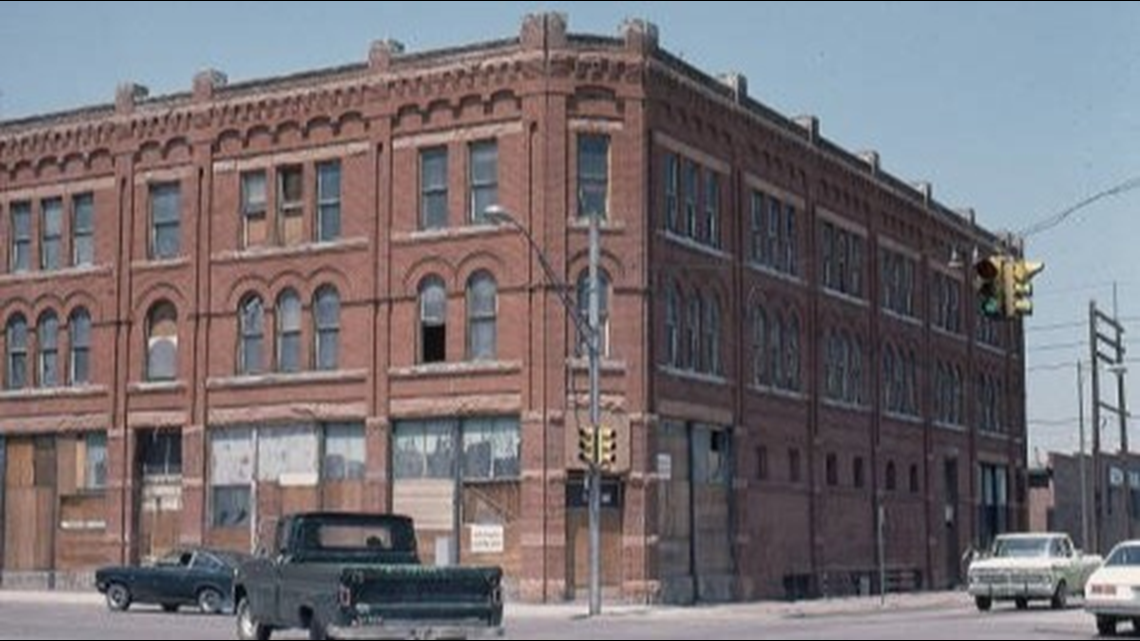
LoDo is Denver’s oldest neighborhood. Its history began as an encampment for the Arapaho tribe, and the city of Denver itself was first founded in 1858 by William Larimer, who was part of the gold rush.
The railroad later became integral to Denver, but as the years went on, Lower Downtown and the Ballpark neighborhoods became less prosperous. In the 1980s, an oil boom led to a wave of construction in downtown Denver – but a subsequent bust led to a high vacancy rate, according to a 2012 report in Urban Land Magazine. By the late 1980s, the area around Coors Field became what was essentially Denver’s “skid row” – and many buildings were demolished in favor of parking lots.

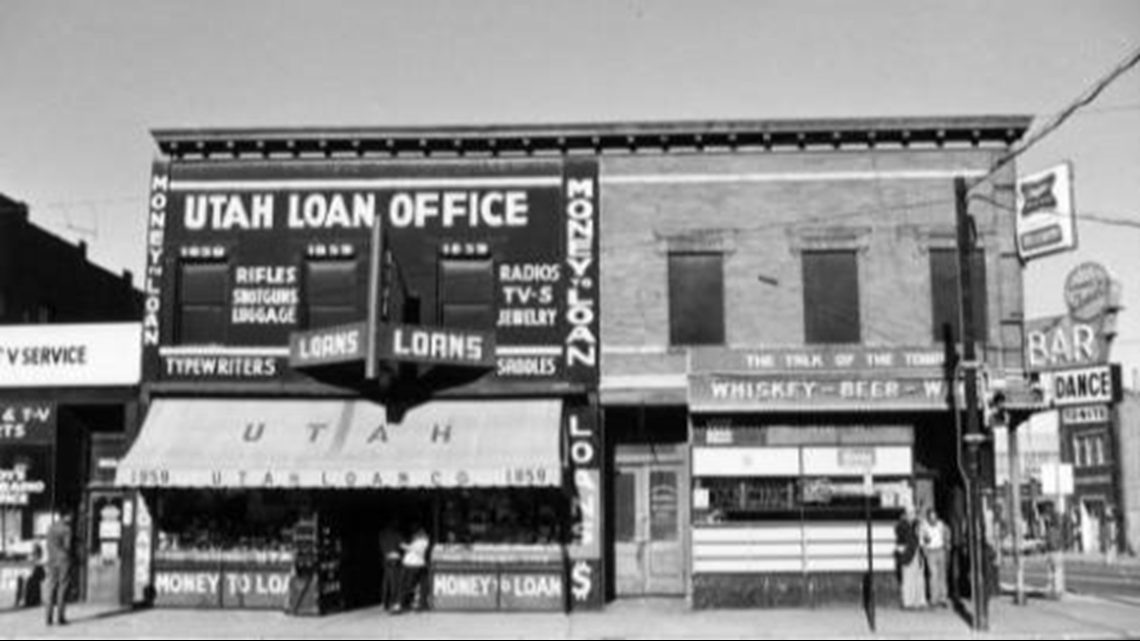
But, in 1988, the Denver City Council passed the Lower Downtown Historic District ordinance, which basically protected the warehouses that gave downtown its character. This, according to the Urban Land Magazine report, helped bolster property values in the area, and bring in business owners and artists.
One of those business owners is former Denver mayor and Colorado governor – and current presidential candidate – John Hickenlooper, was one of the founders of Wynkoop Brewing Co. This opened in 1988. Jazz club El Chapultec was in the neighborhood long before that (the Denver Public Library estimates the building as been around since the late 1800s), and the Tattered Cover’s downtown location opened in 1994.

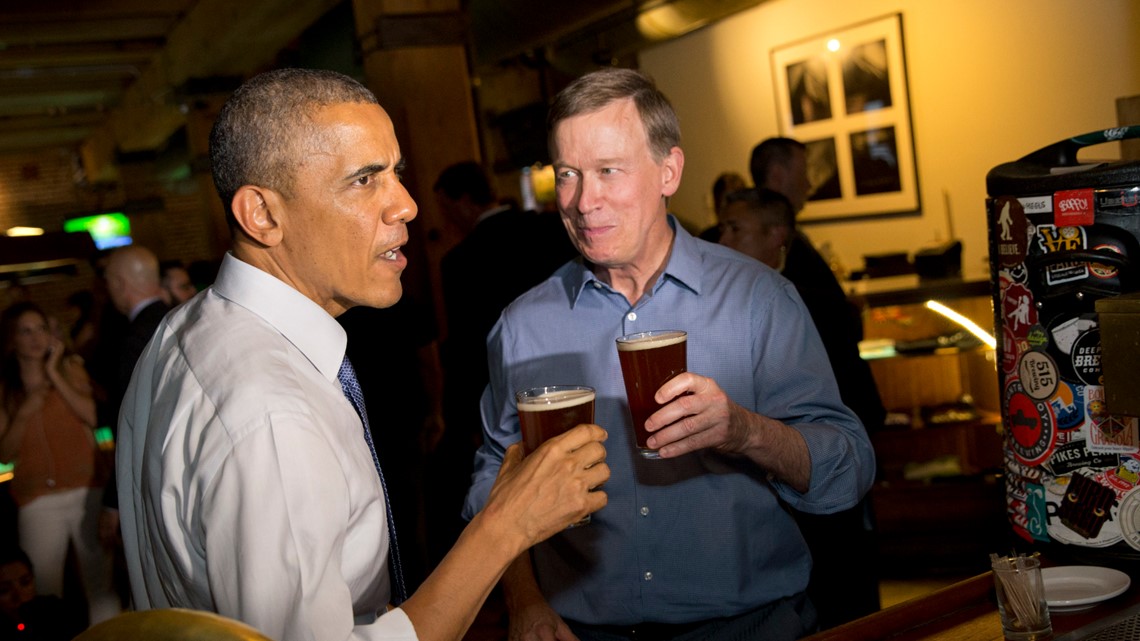
Construction on Coors Field began in 1992. At the time, it was a bit of a battle to build the future home of the Colorado Rockies at 20th and Blake streets.
One of the key figures in making that happen was Karle Seydel, an urban planning consultant who moved to Denver in the mid-1980s and who joined what would become the Ballpark Neighborhood Association in 1994. He was a big proponent of building the stadium on the 76-acre plot of land where it is now, but at the time, he was met with resistance. According to the Denver Public Library, the Denver Metropolitan Major League Baseball Stadium District, the Lower Downtown Historic District, and Denver City Council all advocated building what would become Coors Field where the Pepsi Center is now.

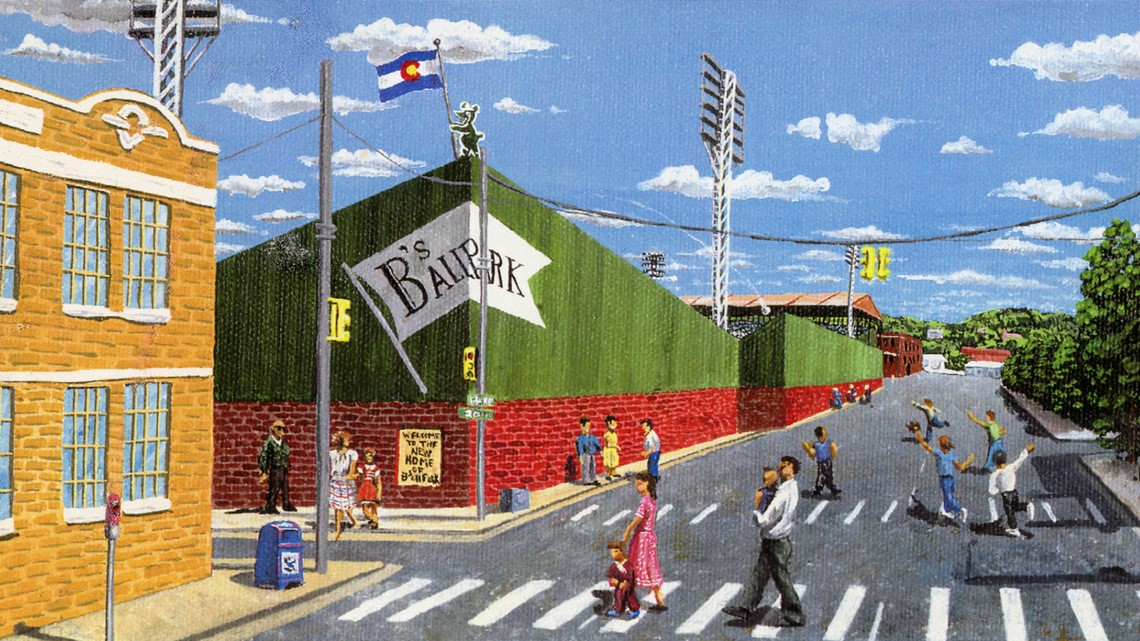
Seydel would then form the North Downtown Alliance of Businesses and Residents for Baseball in our Backyard, and started researching urban stadiums. His sketches inspired the design concept for Coors Field (he called it Union Field based on nearby Union Station) and ultimately, his vision won out.


The Denver Metropolitan Major League Baseball Stadium District chose 20th and Blake streets as the official site of Coors Field in 1991. Construction began a year later, and the ballpark opened on April 26, 1995.
Seydel continued to help with urban planning efforts in the area around Coors Field, which is now home to pricey lofts, what Westword has called the city’s best restaurant neighborhood, and the center of Denver's best nightlife scene.
The Ballpark neighborhood now
From the Dairy Block to the new location for the Cherry Cricket to places like Jackson's, the ViewHouse and the Tavern, the Ballpark neighborhood has a huge variety of things to do before and after a baseball game.
"Instead of a three-hour ball game, you've got a six, seven, eight-hour experience that you're enjoying," Thelan said.
The increased foot traffic in downtown Denver following the opening of Coors Field was a huge deal for businesses. Here's what Hickenlooper told the Denver Business Journal in a 2015 story:
"The baseball stadium ... acted like a gigantic marketing campaign that had brought literally several million people through downtown. Having everyone walk through the neighborhood ended up being the most amazingly successful marketing program in the history of any downtown I’ve ever heard of."
The development around Coors Field has continued. In what was the stadium's west parking lot, crews are working on a development that will house apartments, a hotel, restaurants and multiple other businesses.
This is slated to open on Jan. 21, 2021, and will complement multiple other developments of loft-style homes in the area.
"The definition of downtown from a geography standpoint has definitely changed over the past 10 years," Thelan said. "RiNo is now part of downtown, LoDo is part of downtown, and Ballpark.

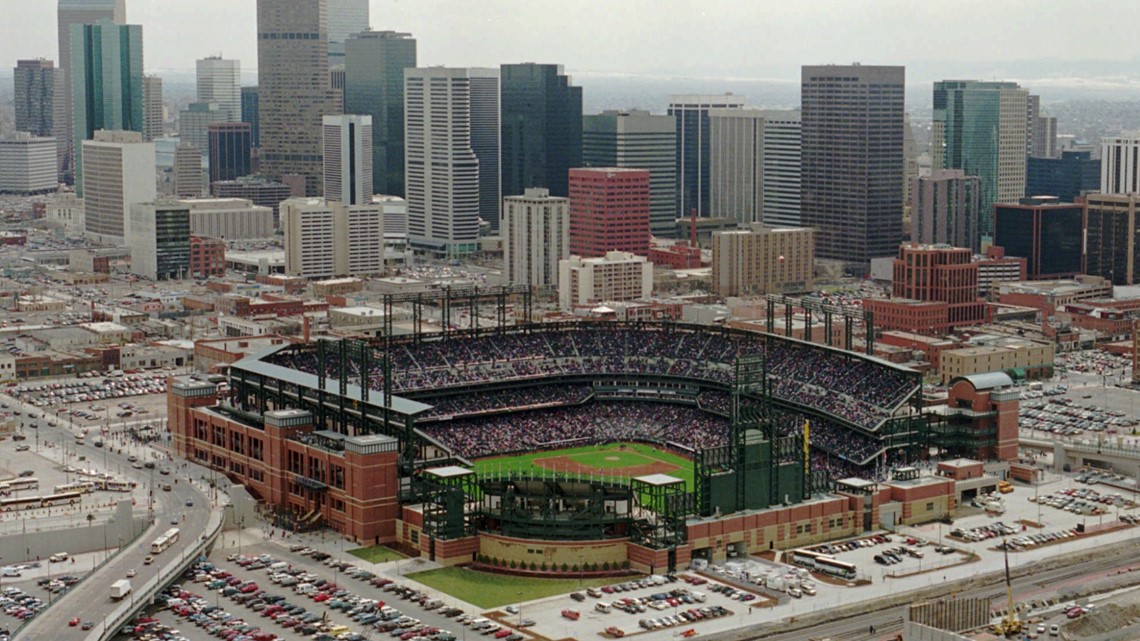
"That's what you see in great cities: you go to New York and you've got all kinds of districts that appeal to all different kinds of people. Other than the stadium itself, I think Ballpark is one you might have just gone through to get from LoDo to RiNo, but now the district has taken shape."
Thelan said he envisions the Ballpark area becoming something of the entertainment center for Denver, with more businesses and residents moving in over time.
"When everything is said and done, you're going to see a mix of uses that helps it extend beyond baseball season," he said.
SUGGESTED VIDEOS | Local stories from 9NEWS

